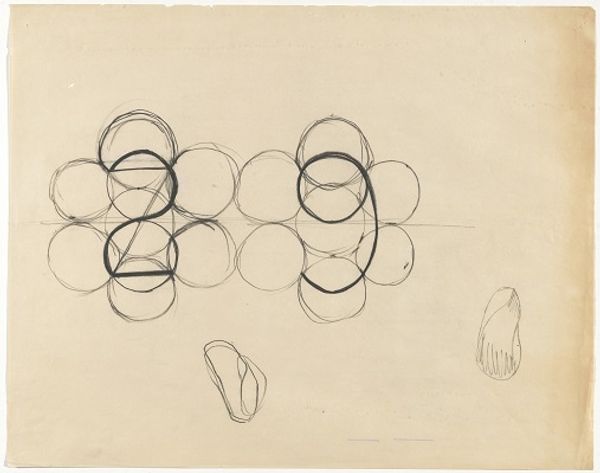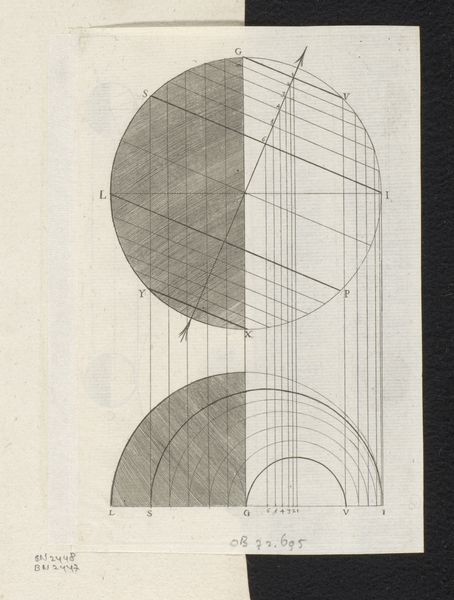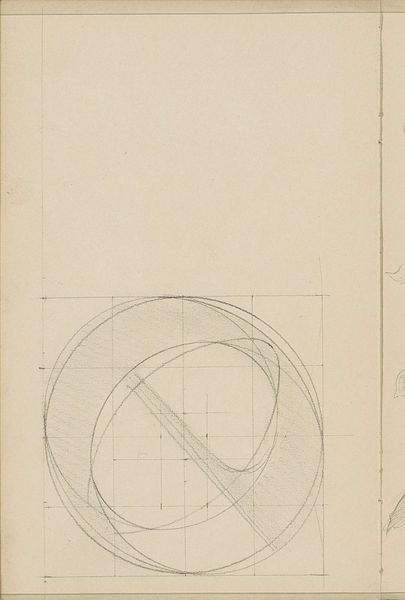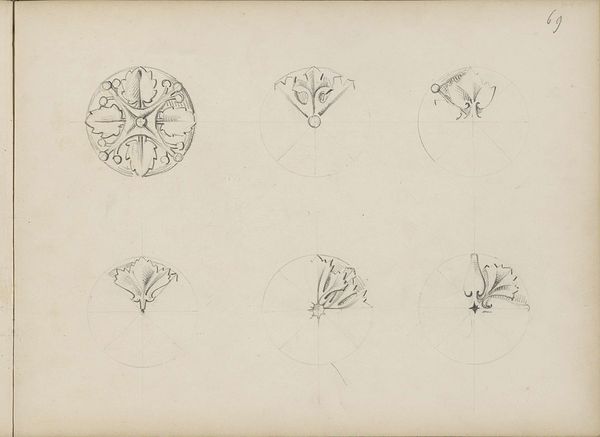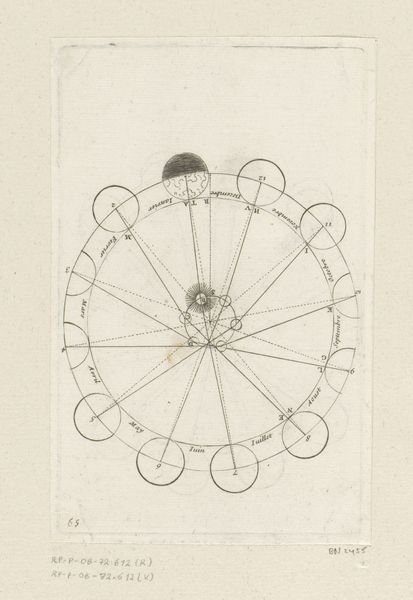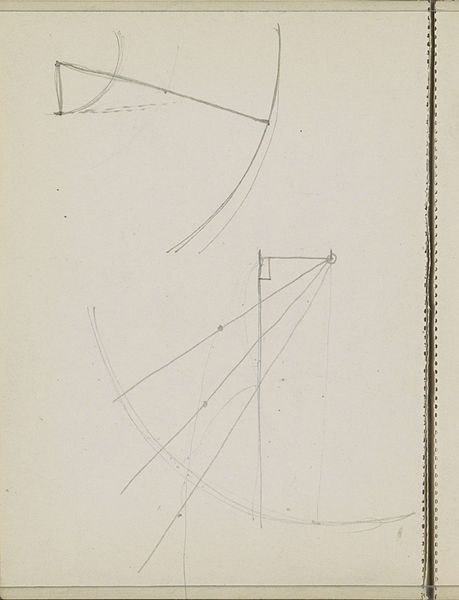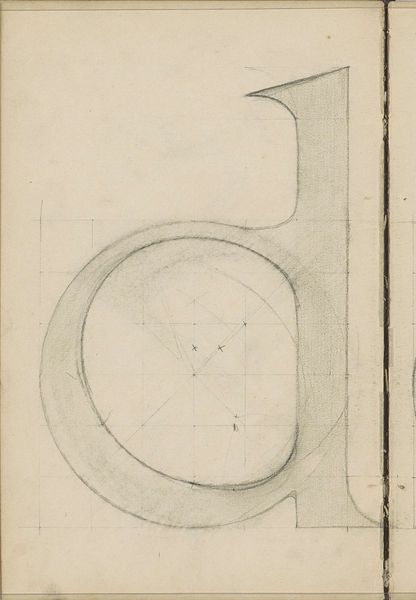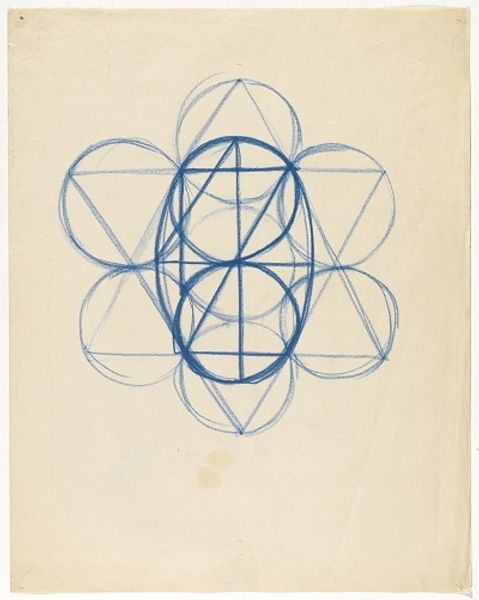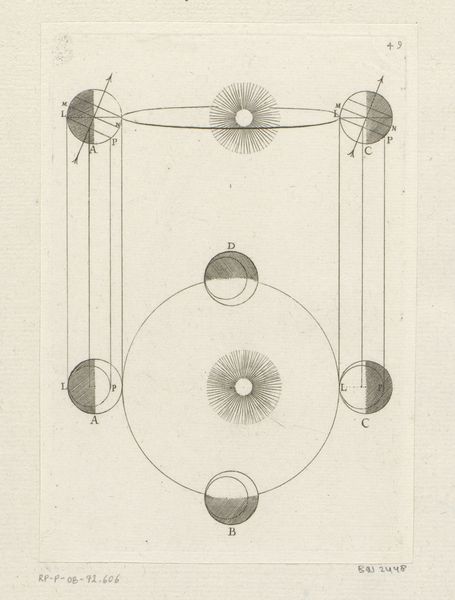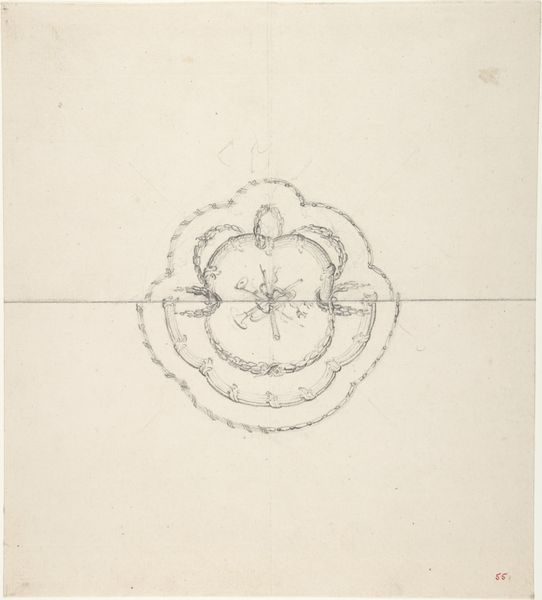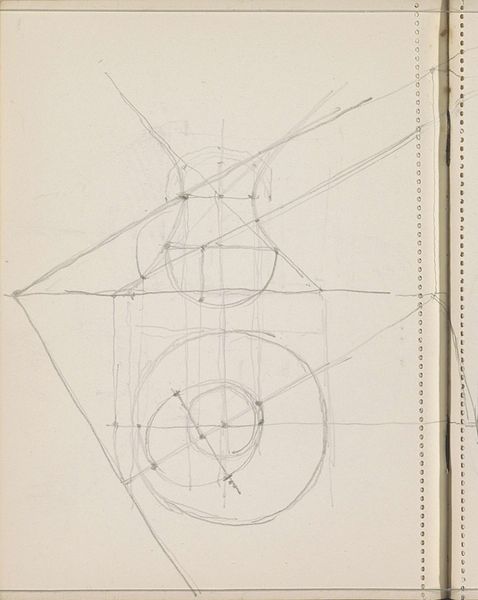
drawing, paper, pencil
#
drawing
#
pen sketch
#
pencil sketch
#
paper
#
geometric
#
pencil
#
abstraction
#
line
Copyright: Rijks Museum: Open Domain
Curator: This is "Bloemen," or "Flowers," a pencil, pen and ink, and crayon drawing on paper, dating from 1906 to 1945. It's part of the collection here at the Rijksmuseum, by Reijer Stolk. And frankly, they’re not flowers in any immediately recognizable sense. Editor: No, my first thought was…soap bubbles caught in a net of thought. Airy, fragile, almost ephemeral ideas trying to coalesce into something solid. Curator: Interesting. Each of the three circular shapes has its own unique internal geometry. The top left seems drawn with the lightest touch, almost an ethereal, pale blue, barely there. Is it crayon? Whereas the other two employ different, progressively denser hatching to suggest form, shadow…substance. Editor: Precisely. They feel like stages, don't they? The violet one's an initial concept, still fluid and uncertain, then it becomes that wiry globe, then that shaded orb—fully formed, weighted down by its own completion. There is a sort of visual haiku occurring on the page, don't you think? Curator: I hadn't considered that. But thinking in stages reveals how symbols accumulate meaning. We see the evolution, from mere concept to tangible form and, through these abstract “flowers”, might discern the patterns of thought crystallizing. Stolk perhaps unknowingly gave visual structure to thought itself. Editor: Yes! And notice how Stolk never commits fully. Even the most "complete" orb has those spiraling gaps, those unanswered curves. Is it deliberate reluctance, an artist afraid to define things too precisely, a fear that closure brings death? Or it is simple uncertainty on how to visually conclude the shape, without losing the felling of airy dynamism within? Curator: Perhaps it hints at the organic world. There are repeating geometric structures visible from sunflowers to galaxies. Are the "flowers" therefore not simple still-lives? Each form presents more significant structures in an abbreviated form, asking us to consider how micro relates to macro, or whether the distinction has substance? Editor: Exactly. This small, seemingly modest work is, really, incredibly bold. And very poetic too. Almost meditative! It rewards close looking. Thank you, Reijer Stolk, for not defining too much, and letting the viewer breathe between the petals and lines of thoughts. Curator: It’s a testament to how line drawings alone can convey more than fully rendered forms often do, offering potential for viewers to imprint their own perceptions and beliefs on the symbol being presented. Editor: What a refreshing and unexpected start to our museum journey, don't you think? One leaves with both question and insight!
Comments
No comments
Be the first to comment and join the conversation on the ultimate creative platform.
